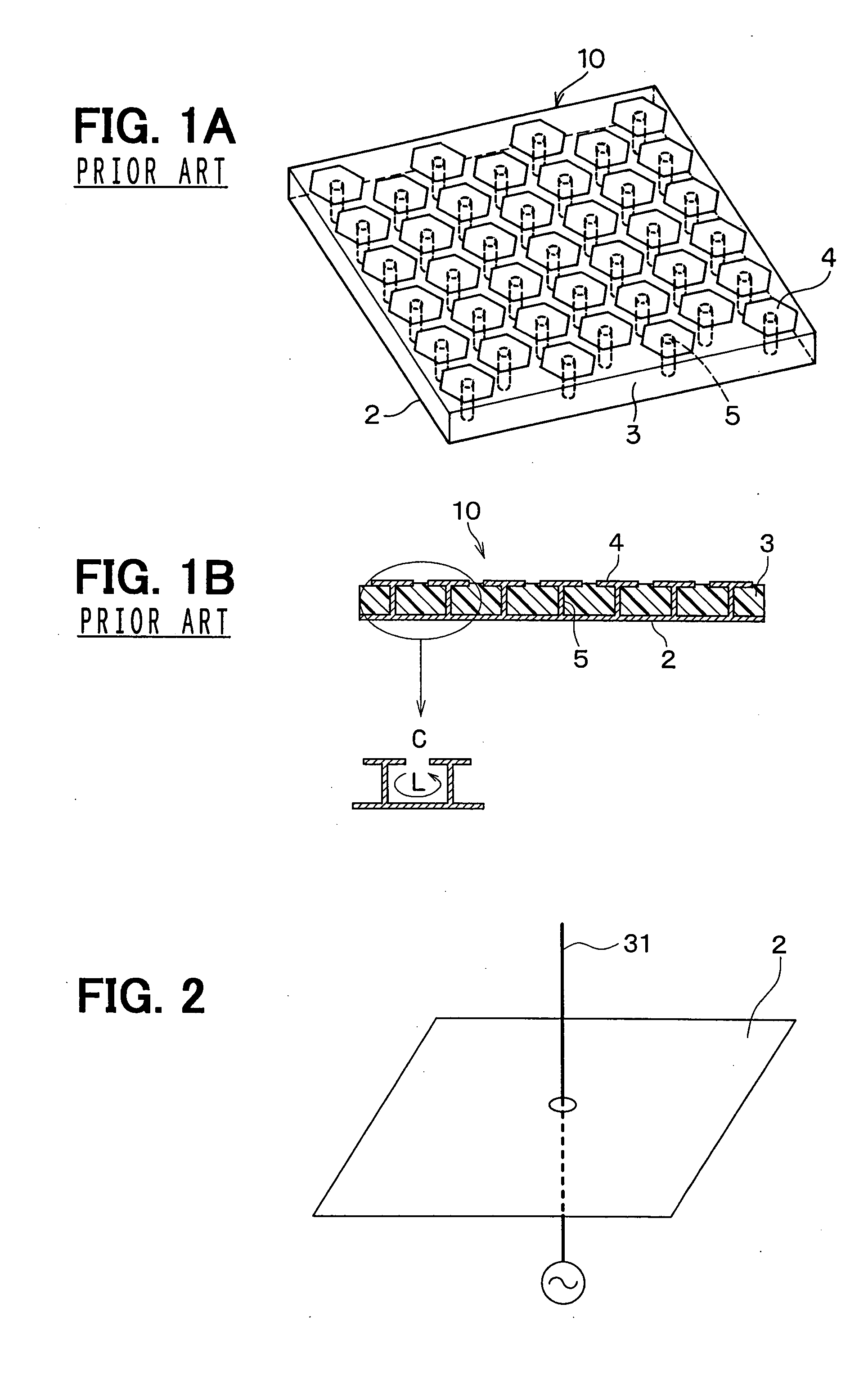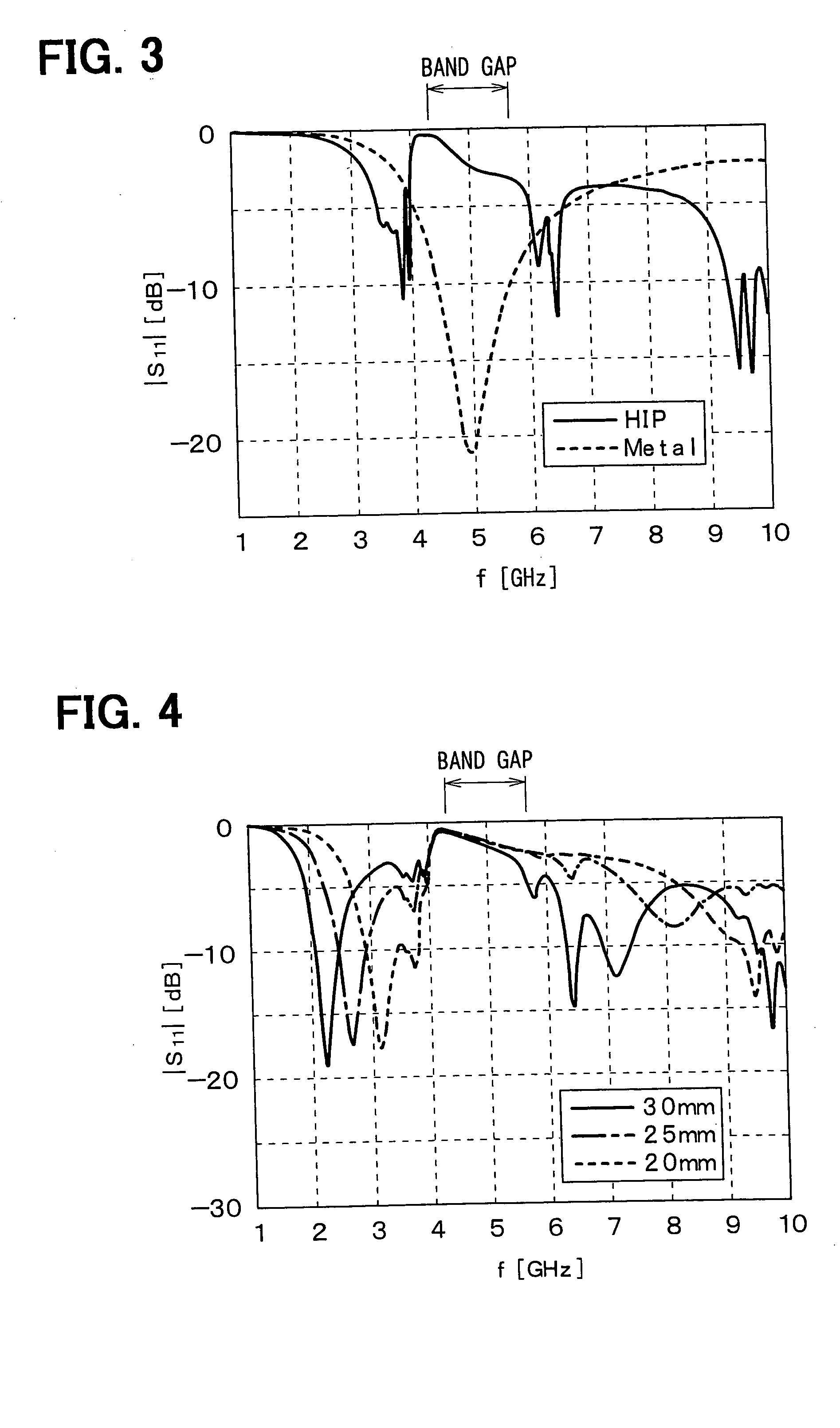Multiple-frequency common antenna
a common antenna and multi-frequency technology, applied in the direction of resonant antennas, antenna earthings, elongated active elements, etc., can solve the problems of complex interference of direct wave radiated directly from the antenna, difficult to provide a space for antenna installation, and difficult to install a plurality of antennas in the limited space within the vehicl
- Summary
- Abstract
- Description
- Claims
- Application Information
AI Technical Summary
Benefits of technology
Problems solved by technology
Method used
Image
Examples
first embodiment
[0075] (First Embodiment)
[0076] A perspective view of a first embodiment of the present invention is shown in FIG. 11, while a cross-sectional view of the same is shown in FIG. 12. An HIP 11 used as a substrate sheet of a multiple-frequency common antenna 1 of the first embodiment is formed by disposing, as shown in FIG. 13, small hexagonal metal plates 4 in the pitch d1 of 7 mm and the gap between the plates d2 of 0.15 mm on a dielectric material layer 3 in the dielectric coefficient of 2.6 and the thickness h1 of 3.2 mm. These small metal plates 4 are connected with a metal plate forming the rear surface of the HIP 11 using through-holes 5 as the linear metal bars in the diameter d3 of 0.8 mm. In the structure explained above, the resonant frequency of the HIP 11 in this embodiment is set to 5 GHz. As the dielectric material layer 3, an air layer or a dielectric material substance other than the air may be used. As will be explained later, the geometry of HIP must be determined co...
second embodiment
[0083] (Second Embodiment)
[0084]FIG. 18 shows a perspective view of the multiple-frequency common antenna according to the second embodiment of the present invention. In FIG. 18 and the subsequent figures, the surface including the small metal plates 4 of the HIP are indicated as the hatched areas.
[0085] The multiple-frequency common antenna according to the second embodiment is provided, at the outer peripheral portion of a first substrate sheet 11, with the HIP as the first substrate sheet 11 which has also been used as the substrate sheet of the multiple-frequency common antenna in the first embodiment and the HIP as a second substrate sheet 12 in which the second frequency band including the resonant frequency of 2.46 GHz of the monopole antenna as the second antenna is defined as the frequency band from the band gap. However, the first frequency band and the second frequency band are set not to overlap with each other.
[0086] The band gap of the HIP used as the substrate sheet...
PUM
 Login to View More
Login to View More Abstract
Description
Claims
Application Information
 Login to View More
Login to View More - R&D
- Intellectual Property
- Life Sciences
- Materials
- Tech Scout
- Unparalleled Data Quality
- Higher Quality Content
- 60% Fewer Hallucinations
Browse by: Latest US Patents, China's latest patents, Technical Efficacy Thesaurus, Application Domain, Technology Topic, Popular Technical Reports.
© 2025 PatSnap. All rights reserved.Legal|Privacy policy|Modern Slavery Act Transparency Statement|Sitemap|About US| Contact US: help@patsnap.com



